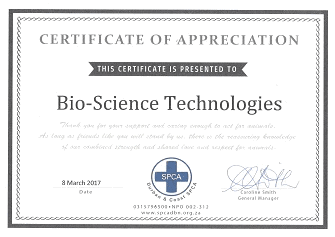
We are agents and distributors in South Africa for Technical Service Consultants, UK
A leading manufacturer of specialised and routine swabs as well as high-quality microbiology consumables, check out our Products for Sale page!
![]()







Labelling requirements
South African Food Labelling Regulations (summary of R146 of 1 March 2010): Reference: South African Government Gazette No. 9236, Vol 537, 1 March 2010, No. 32975
The number of samples required for submission to a testing laboratory must be as follows:
- For products of relatively homogenous compositions, e.g. pasta, chips, cheese, etc., a minimum of 3 samples from different production batches.
- For products of non-homogeneous compositions, e.g. mixed vegetables, ready to eat meals, cakes, etc., a minimum of 12 samples from different production batches.
The independent laboratory will test the composite sample of the 3 products/samples (or 12 products/samples) for its nutritional values.

Water Activity, what is it?
The Influence of Water Activity (Aw) and Moisture on the Shelf Life of Food Products
Review article by our (ex) staff member, Nirvasha Ramparsad of Bio-Science Technologies, Durban, South Africa; dated 2014Many foods, including baked food such as biscuits, cakes, savory snacks and even nuts suffer in quality due to a gain in moisture (absorption) or loss of moisture (dehydration). This factor allows one to determine the choice of packaging to be used. Whether the growth of microorganisms occurs in food or not is an important factor determined by humidity (measured as water activity). Rates of moisture exchange through packaging and the change in the rate of water activity of food towards a critical limit will lead towards the determination of a product shelf life.
Generally there is an optimum water activity of most foods, which would yield a maximum shelf life. Thus, the shelf stability of products is formulated with respect to its water activity. A low water activity results in inhibition of mould growth. Water activity predicts how the migration of moisture affects the product. Note that the water activity of a food is not the same as its moisture (water) content. At a water activity of less than 0.6 units microbiological problems do not commonly occur.
The relationship between microbial spoilage and moisture is critical since microorganisms present a threat of foodborne illness, e.g. gastrointestinal infections caused by Salmonella spp; Klebsiella spp and Escherichia spp. Secretions caused by organisms such as Staphylococcus spp. and Bacillus spp. can cause food intoxications which can prove fatal to consumers. Allergic consequences, carcinogenicity, mutagenicity can be caused by mould, which also produce toxic substances. The water activity of foods influence the reproduction of these organisms.
Temperature changes are always occurring during handling, factory storage, distribution and in the shop; including the home of the consumer. The air in a package holds more moisture at elevated temperatures than at refrigerated temperature. Thus at a higher temperature the water activity of the air is reduced substantially, while at the lower temperature, the water activity of the air is increased.
Moisture, heat, freezing, oxygen and UV light are several factors, which affect shelf life. Moisture management means, that, when a package is exposed to varying environmental conditions, the products optimal water activity is maintained. This system allows the water activity in the package to remain constant by providing moisture to the product when needed, and removing it when necessary.
The packaging material controls the intake or escape of moisture. Preservation of the product in its optimal condition cannot occur indefinitely even if the packaging has excellent moisture barrier properties. A package may contain leaks because of cracking in the material due to flexing or flaws in the heat seal. The packaging itself, may also be, permeable to moisture. These factors affect the changing moisture levels of a food, impacting on the quality and shelf life of a food product.
BACK TO TOP OF PAGE
